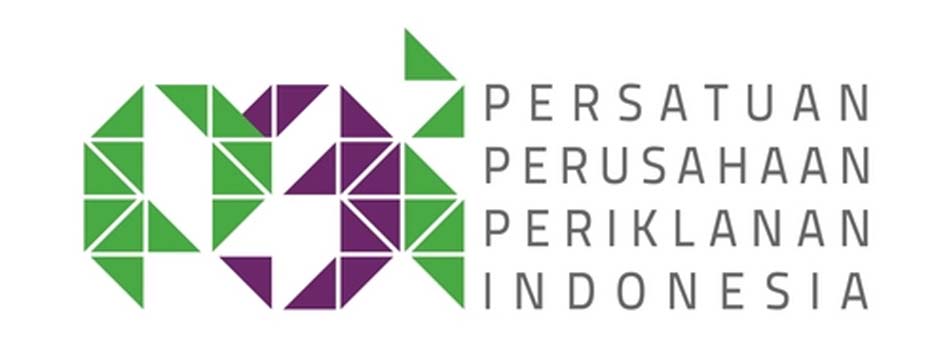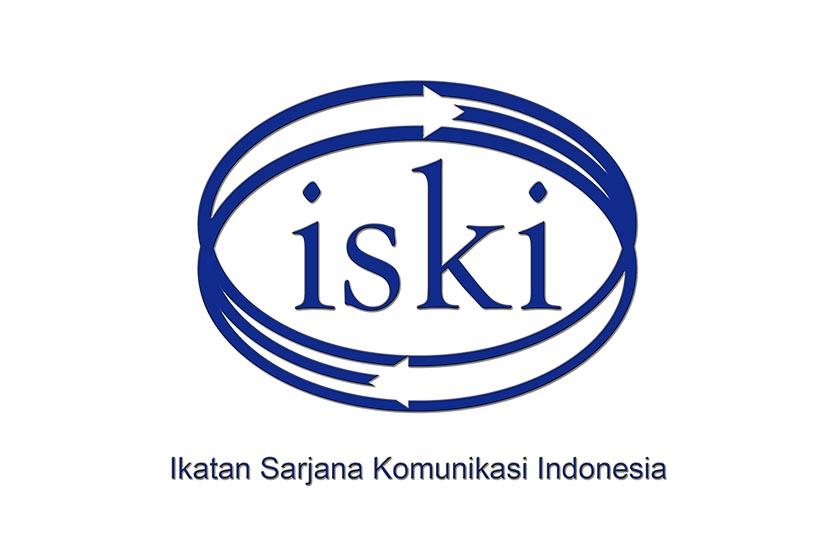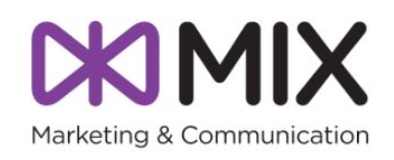Brand Discourse Analysis (BDA)
Conceptual and Methodological Propositions
DOI:
https://doi.org/10.36782/jobmark.v2i1.93Kata Kunci:
Brand's message, brand's mode, brand's medium, brand's milieu, brand discourseAbstrak
Brand Discourse Analysis (BDA) is a theory and method for analyzing how discourse is represented, reproduced, and circulated through messages, initiatives, or programmatic endeavors, means of communication, and conditions or ecosystems in which brands grow and develop. Several dimensions or aspects of BDA are: 1) Brand Message, which includes three elements, namely: Promo, Promise, and Prominence, 2) Brand Mode includes Strategy, Style, and Story, 3) Brand Medium consists of Channel, Chain, and Clique, and 4) Brand Milieu comprises Climate, Context, and Culture. In an increasingly hypermediated world, BDA has strategic implications in optimizing brand communication performance through various elements of discourse. Also, BDA has theoretical implications in enriching discourse analysis literature in the context of branding and marketing communications.
Unduhan
Referensi
Alvesson, M., & Karreman, D. (2000). Varieties of discourse: On the study of organizations through discourse analysis. Human relations, 53(9), 1125-1149.
Barak-Brandes, S., & Lachover, E. (2016). Branding relations: Mother–daughter discourse on beauty and body in an Israeli campaign by Dove. Communication, Culture & Critique, 9(3), 379-394.
Berger, A. A., & Berger, A. A. (2019). Brand Discourse. Brands and Cultural Analysis, 137-146.
Berthelot-Guiet, K. (2016). Elderly and IT: brand discourses on the go. In Human Aspects of IT for the Aged Population. Healthy and Active Aging: Second International Conference, ITAP 2016, Held as Part of HCI International 2016 Toronto, ON, Canada, July 17–22, 2016, Proceedings, Part II 2 (pp. 186-193). Springer International Publishing.
Bivainiene, L. (2010). Brand life cycle: Theoretical discourses. Economics & Management.
Bhatia, V. K. (1993) Analyzing genre. Longman.
Bhatia, V. K., Flowerdew, J., & Jones, R. H. (2008). Approaches to discourse analysis. In Bhatia, V. K., Flowerdew, J., & Jones, R. H. (eds), Advances in discourse studies (pp. 1-17). Sage
Bleedorn, G. (2015). Changing conversations: Brand identity as discourse. Journal of Brand Strategy, 5(1), 6-21.
Bode, M., & Kjeldgaard, D. (2017). Brand doings in a performative perspective: an analysis of conceptual brand discourses. In Contemporary Consumer Culture Theory (pp. 251-282). Routledge.
Brown, G., & Yule, G. (1983). Discourse analysis. Cambridge University Press.
Burman, E. (1991). What Discourse is Not. Philosophical psychology, 4(3), 325-342.
Bush, M. (2009). Bloggers be warned: FTC may monitor what you say; the Proposed plan would hold web writers liable for false brand discourse. Advertising Age, 80(13), 3-3.
Cameron, D. (2001) Working with spoken discourse. Sage.
Cicourel, A. V. (1980). Three models of discourse analysis: The role of social structure. Discourse Processes, 3(2), 101-131.
Clark, H. H. & Van Der Wege, M. M. (2005). Imagination in Discourse. In D. Schiffrin, D. Tannen, & H. E. Hamilton (eds), The handbook of discourse analysis (pp. 772-786). Wiley
Coyle, A. (2007). Discourse analysis. In E. Lyons & A. Coyle (eds), Analyzing qualitative data in psychology (pp. 98-116). Sage
Cook, G. (2011). Discourse analysis. In The Routledge Handbook of Applied Linguistics (pp. 431-444). Routledge.
Coulthard, M., & Condlin, C. N. (2014). An introduction to discourse analysis. Routledge.
Delin, J. (2000) The language of everyday life: an introduction. Sage.
Denzin, N. K. & Lincoln, Y. S. (2000) Handbook of qualitative research. Sage.
Diniz, F., & Suarez, M. C. (2018). Cultural meanings and consumers' discourses about their brand abandonment. BAR-Brazilian Administration Review, 15.
Eggins, S. & Slade, D. (1997) Analyzing casual conversation. Cassell.
Fairclough, N. (1999) Linguistic and intertextual analysis within discourse analysis. In A. Jaworski & N. Coupland (eds.), The discourse reader (pp. 183–211). Routledge.
Gee, J. (1999) An introduction to discourse analysis. Routledge.
Gee, J. P. (2010). How to do discourse analysis: A toolkit. Routledge.
Gill, R. (2000). Discourse analysis. Qualitative researching with text, image and sound, 1, 172-190.
Grant, D., & Iedema, R. (2005). Discourse analysis and the study of organizations. Text-Interdisciplinary Journal for the Study of Discourse, 25(1), 37-66.
Gunnarson, B., Linell, P., & Nordberg, B. (1997) The construction of professional discourse. London: Longman.
Handford, M., & Gee, J. P. (Eds.). (2013). The Routledge handbook of discourse analysis. Routledge.
Hirschman, E. C., Scott, L., & Wells, W. B. (1998). A model of product discourse: linking consumer practice to cultural texts. Journal of Advertising, 27(1), 33-50.
Hoey, M. (2001) Textual interaction: an introduction to written discourse analysis. London: Routledge.
Howarth, D. (2000). Discourse. McGraw-Hill.
Jones, R. H. (2012). Discourse analysis. Routledge.
Jorgensen, M. W., & Phillips, L. J. (2002). Discourse analysis as theory and method. Sage.
Kaur, M., & Mutty, B. (2016). The Commodification of Islam?: A Critical Discourse Analysis of Halal Cosmetics Brands. Kemanusiaan: The Asian Journal of Humanities, 23.
Kelly-Holmes, H. (2016). Constructing and disputing brand national identity in marketing discourse. Signs and Society, 4(S1), S51-S69.
Koller, V. (2007). “The World's Local Bank”: Glocalisation as a Strategy in Corporate Branding Discourse. Social Semiotics, 17(1), 111-131.
Kress, G., & Bezemer, J. (2023). Multimodal discourse analysis. In The Routledge Handbook of Discourse Analysis (pp. 139-155). Routledge.
Lazaraton, A. (2009). Discourse analysis. Qualitative research in applied linguistics: A practical introduction, 242-259.
Lemke, J. L. (2013). Multimedia and discourse analysis. In The Routledge Handbook of Discourse Analysis (pp. 79-89). Routledge.
Lischinsky, A. (2017). Critical discourse studies and branding. In J. Flowerdew & J. Richardson (eds), The Routledge Handbook of critical discourse studies (pp. 540-552). Routledge
Loacker, B., & Sullivan, K. R. (2016). The liminality of branding: Interweaving discourses ‘making up' a cultural intermediary occupation. Marketing Theory, 16(3), 361-382.
Machin, D., & Thornborrow, J. (2003). Branding and discourse: The case of Cosmopolitan. Discourse & Society, 14(4), 453-471.
Machin, D., & Niblock, S. (2013). Branding newspapers: Visual texts as social practice. In Language and Journalism (pp. 93-108). Routledge.
McCarthy, M., Christian, M., & Slade, D. (2019). Discourse analysis. In An Introduction to Applied Linguistics (pp. 55-71). Routledge.
Milroy, L. (1987) Observing and analyzing natural language. Blackwell.
Mühlbacher, H., Hemetsberger, A., Thelen, E., Vallaster, C., Massimo, R., Füller, J., ... & Kittinger, C. (2006). Brands as complex social phenomena. In Proceedings of the Thought Leaders International Conference on Brand Management, Birmingham, UK.
Mumby, D. K. (2016). Organizing beyond organization: Branding, discourse, and communicative capitalism. Organization, 23(6), 884-907.
Nakassis, C. V. (2012). Brand, citationality, performativity. American Anthropologist, 114(4), 624-638.
Nakassis, C. V. (2013). Brands and their surfeits. Cultural Anthropology, 28(1), 111-126.
Neumann, I. B. (2008). Discourse analysis. In Qualitative methods in international relations: A pluralist guide (pp. 61-77). London: Palgrave Macmillan
Ng, C. J. W., & Koller, V. (2013). Deliberate conventional metaphor in images: The case of corporate branding discourse. Metaphor and Symbol, 28(3), 131-147.
Ng, C. J. W. (2018). Performing brand identity: situating branding in discursive-ideological landscapes. Consumption Markets & Culture, 21(2), 147-170.
O’Keeffe, A. (2013). Media and discourse analysis. In The Routledge Handbook of Discourse Analysis (pp. 441-454). Routledge.
O’Reilly, D. (2006). Commentary: branding ideology. Marketing Theory, 6(2), 263-271.
Otubanjo, O. (2013). A Discourse approach to brand leadership management. International Journal of Marketing Studies, 5(2), 131.
Ourahmoune, N., Binninger, A. S., & Robert, I. (2014). Brand narratives, sustainability, and gender: A socio-semiotic approach. Journal of Macromarketing, 34(3), 313-331.
Paltridge, B., & Burton, J. (2000). Making sense of discourse analysis. Antipodean Educational Enterprises.
Perez, C., & Bairon, S. (2013). The meta-discourse of contemporary brands and the indexing of consumption: A way to build bonds of meaning. Social Semiotics, 23(4), 570-586.
Petroni, S. (2019). How do social media shape identities and discourses in professional digital settings: self-communication or self-branding? Analyzing Digital Discourse: New Insights and Future Directions, 251-281.
Reed, M. (2000). The limits of discourse analysis in organizational analysis. Organization, 7(3), 524-530.
Roper, S., Caruana, R., Medway, D., & Murphy, P. (2013). Constructing luxury brands: exploring the role of consumer discourse. European Journal of Marketing, 47(3/4), 375-400.
Rossolatos, G. (Ed.). (2023). Advances in Brand Semiotics & Discourse Analysis. Vernon Press.
Salzer‐Mörling, M., & Strannegård, L. (2004). Silence of the brands. European journal of marketing, 38(1/2), 224-238.
Schiffrin, D. (1994) Approaches to discourse. Oxford: Blackwell.
Schiffrin, D. (2005). Discourse Markers: Language, Meaning, and Context. In D. Schiffrin, D. Tannen, & H. E. Hamilton (eds), The handbook of discourse analysis, (pp. 54-75). Wiley
Sinclair, J. McH. & Coulthard, M. (1975) Towards an analysis of discourse. Oxford University Press.
Strauss, S., & Feiz, P. (2013). Discourse analysis: Putting our worlds into words. Routledge.
Tannen, D. (1984) Conversational style: analyzing talk among friends. Norwood, NJ: Ablex.
Tannen, D., Hamilton, H. E., & Schiffrin, D. (2015). The handbook of discourse analysis. John Wiley & Sons.
Theodoropoulou, I. (2020). Qatar as a branded architectural discourse in World Cup 2022. A research companion to language and country branding, 219.
Thomas, J. (1995) Meaning in interaction. Longman.
Titscher, S., & Jenner, B. (Eds.). (2000). Methods of text and discourse analysis: In search of meaning. Sage.
Tracy, K. (2005). Discourse analysis in communication. In D. Schiffrin, D. Tannen, & H. E. Hamilton (eds), The handbook of discourse analysis, (pp. 725-749). Wiley
Trappes‐Lomax, H. (2004). Discourse analysis. In A. Davies & C. Elder (eds), The Handbook of Applied Linguistics, (pp. 133-164). Wiley
Vallaster, C., & Von Wallpach, S. (2013). An online discursive inquiry into the social dynamics of multi-stakeholder brand meaning co-creation. Journal of Business Research, 66(9), 1505-1515.
Wang, Y., Feng, D., & Ho, W. Y. J. (2021). Identity, lifestyle, and face-mask branding: A social semiotic multimodal discourse analysis. Multimodality & Society, 1(2), 216-237.
Widler, J. (2007). Nation branding: With pride against prejudice. Place Branding and Public Diplomacy, 3, 144-150.
Widows on, H. G. (1995) Discourse analysis: a critical view. Language and Literature, 4(3), 157–72.
Widdowson, H. G. (2008). Text, context, pretext: Critical issues in discourse analysis. John Wiley & Sons.
Wijaya, B. S. (2013). How ‘Deep’ is Your Brand? The Hierarchical Effects Model of Emotional Branding. Journal Communication Spectrum, 3(2), 158-169.
Willig, C. (2003). Discourse analysis. Qualitative psychology, 159-183.
Wood, L. A., & Kroger, R. O. (2000). Doing discourse analysis: Methods for studying action in talk and text. Sage.
Woods, N. (2014). Describing discourse: A practical guide to discourse analysis. Routledge.
Diterbitkan
Cara Mengutip
Terbitan
Bagian
Lisensi
Hak Cipta (c) 2020 Jobmark: Journal of Branding and Marketing Communication

Artikel ini berlisensi Creative Commons Attribution-NonCommercial 4.0 International License.


















